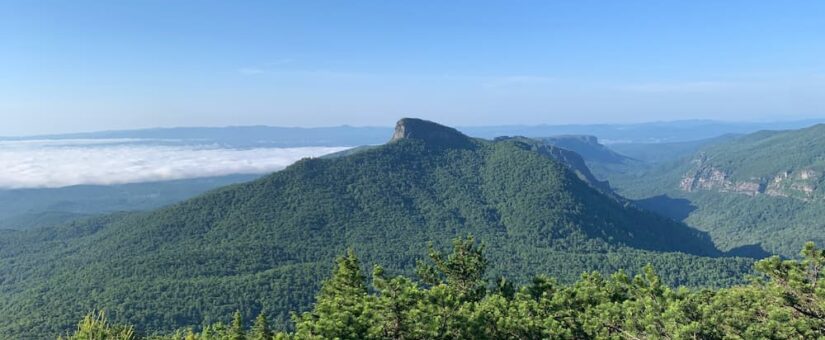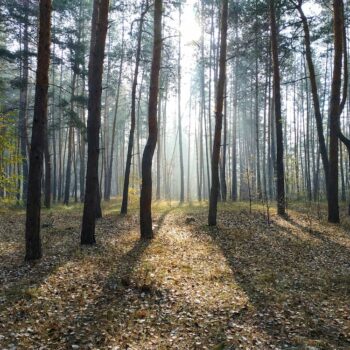
Expert Advice for Hunting in National Forests: Questions and Tips
Many people who live in urban areas or densely populated suburbs dream of hunting. Hunting takes the time to prepare and provides a great lesson on living off the land for those with an adventurous spirit. For many, this means heading out into national forests to find that perfect prey. However, there are some things you need to know before you head out into the woods!
This article will answer any questions you have about hunting in national forests and provide helpful tips for success.
[IMAGE]
Can you hunt in National Forests?
Yes, hunting is allowed in National Forests.
The most important thing to remember when hunting on national forest land is that you must follow all of the rules and regulations set forth by state and local laws (i.e., licenses) as well as those put out by the U.S Forest Service! Hunting within a National Park or Preserve may be prohibited, so it’s best to check beforehand if this applies to your area.
What is the best forest to hunt in the U.S.?
Choosing the best National Forest to hunt in is a difficult question. Some prefer hunting in places that are more densely populated with game such as deer, while others may like it when there’s less competition for prey animals and smaller populations of humans who could make them feel uncomfortable.
Some great forests to consider include:
- The Bitterroot National Forest (Idaho) – This forest provides plenty of opportunities for hunters, including elk and mule deer among other game!
- The Cuyahoga Valley National Park (Ohio) – More than 100 acres within this park is designated a wildlife refuge; perfect for those looking for solitude or an adventure!
- Pisgah National Forest (North Carolina) – This forest is the perfect mix of everything: it offers plenty of hunting opportunities, a diverse range of wildlife, and even some great views!
- The Shawnee National Forest (Illinois) – With more than 500 miles worth of trails and over 13,000 acres available to explore, this national forest has something for every hunter.
There are many forests across America that provide excellent hunting opportunities so be sure to research before you go on your next hunt!
What type of gunsight is the best for forest hunts?
A rifle scope is a good choice for hunting in forests (for example Henry 1001 sights). One with variable magnification would be most useful as you’ll need to adjust the sight depending on your target’s distance from you and how well they can see you.
Be sure to choose a gun that has enough weight without being too heavy or oversized so it doesn’t throw off your balance when aiming!

Rules of Hunting National Forests in different states
Alabama: The hunting of all animals is prohibited in national forests except raccoons, squirrels, and rabbits.
Arizona: It’s not permitted to hunt with a rifle or firearm while in possession of any amount of alcohol nor for the hunter to be under the influence of drugs or narcotics. Hunters may only possess one gun at a time and it must always be carried unloaded when transporting from place to place during the hunting season.
California: Hunting within National Parks (excluding game refuges) is strictly prohibited by law unless authorized by a specific permit issued by the park superintendent prior to such activities taking place; violators are subject to imprisonment up to six months and/or fine up to $5000 -$25000.
Hunting National Forests in Alabama
Alabama offers some of the best hunting opportunities in America. National forests make up a large portion of Alabama’s landmass, and more than half of those national forest lands are available for public hunting. To hunt on these federally-owned woodlands, hunters must obtain either an annual or lifetime permit from the U.S. Forest Service office nearest to their home address before they can legally hunt on any part of the state’s national forest system property.
Hunting National Forests in Wisconsin
Wisconsin’s forest lands are a treasure trove of hunting opportunities for both wildlife and people. Hunting is managed by the Department of Natural Resources (DNR) through its statewide permitting system, with all hunters required to obtain an annual or five-year resident or nonresident deer hunting license before they can purchase additional permits needed to hunt specific game animals such as bear, turkey, and waterfowl.
The DNR manages these forests in cooperation with other agencies: The U.S. Forest Service provides most land management funding on National Forests in Wisconsin while the Corps of Engineers maintains many state waterways that flow through national forests; there are also trails maintained jointly by various federal, state and local governments throughout our public lands. Read more.
Hunting National Forests in Georgia
There are many national forests in Georgia. Lots of hunters like to hunt these areas as they provide lots of privacy and more hunting area than other public land options. However, there are some important considerations before heading out into the woods that every hunter should know about first.
- Hunters must have a valid hunting license for their state and proper tags for each animal hunted on an annual basis
- A permit is required to use any motorized vehicle or boat on National Forest System lands (unless it’s being used to transport you)
- Only disabled veterans with special permits may access certain parts of Chattahoochee National forest north of Dicks Creek without written permission from District Ranger Karl Smith at least two weeks prior to entry
Final words
Hunting in national forests is a great way to enjoy hunting and spend some quality time outdoors. With proper knowledge, any hunter will be able to maximize their experience while minimizing the risk of getting into trouble with game wardens or accidentally breaking laws. All hunters should take heed of these warnings before venturing out on public land as they are not all-inclusive for every state’s rules but give you an idea of what may come up in your area.


